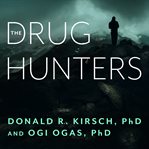Review by Booklist Review
Kirsch, a veteran drug hunter, and Ogas, a talented science writer, expertly chronicle the search for lifesaving medications. Early humans stumbled across substances like opium, the active ingredient of the poppy, and fungi with antibiotic and anti-hemorrhaging properties. (The 5,000-year-old Ice Mummy, found intact in Italy in 1991, had special mushrooms strapped to his legs.) But like modern researchers, they also relied on trial-and-error screening. The results then and now could be miraculous (penicillin for infections or vitamin C for scurvy); they could also be fatal. Digitalis, extracted from the plant called foxglove, served as a poison in primitive arrows; today, it's used to treat congestive heart failure. The authors note that it's more expensive than ever to come up with new drugs because of restrictive patent laws and strict, extensive FDA regulations. This high cost creates financial incentives to come up with medicines (like pills for high blood pressure) that must be bought repeatedly rather than medicines (like vaccines) that produce cures. A fascinating read full of surprising facts and intriguing connections.--Springen, Karen Copyright 2016 Booklist
From Booklist, Copyright (c) American Library Association. Used with permission.
Review by Publisher's Weekly Review
Kirsch, a veteran drug hunter, takes a lively and sweeping look at the history of drug discovery and how difficult, expensive, and pivotal the search has proven to be. It's an enlightening, if ominous, survey. With the aid of science writer Ogas, Kirsch runs through a bevy of landmark drug finds, including the development of laudanum, an alcohol-based opium preparation, in the 16th century; the isolation of the active chemical in quinine in 1820; the synthesis of pain-blocking ether in 1846; the 1899 creation of the compound aspirin; the 1910 discovery of arsphenamine, a treatment for syphilis; the making of penicillin, the first broad-spectrum antibiotic, in 1940; and the research that led to an oral contraceptive pill in the 1950s. "The soaring cost of developing new drugs creates financial disincentives that prevent pharma companies from focusing on drugs that produce cures," Kirsch writes of today's modern dilemma. Indeed, he notes, on average, getting a new pharmaceutical product approved by the FDA takes about 14 years and costs approximately $1.5 billion. Kirsch sidesteps wider problems in the healthcare industry to conclude that overcoming the obstacles to creating new pharmaceuticals will require granting scientists "creative control over the drug hunting process." (Jan.) © Copyright PWxyz, LLC. All rights reserved.
(c) Copyright PWxyz, LLC. All rights reserved
Review by Kirkus Book Review
Biopharmaceutical consultant Kirsch debuts with a popular account of the search for new drugs, from prehistory through the rise of big pharma.This lucid, anecdote-rich book, co-authored by science writer Ogas (co-author: Shrinks: The Untold Story of Psychiatry, 2015, etc.), covers familiar ground for specialists but offers a bright overview for the rest of us of humankind's hunt for medicines, first in the molecules of plants, then in synthetic compounds, and now in the human genome. Throughout history, drug discoveries have been "entirely fortuitous," writes the author, who has been a chief science officer with several major drug firms. Successful drug hunting takes "talent, moxie, persistence, luckand even then, it might not be enough." In fact, most researchers "never" find new compounds that safely and effectively improve health. That said, Kirsch tells the fascinating stories of historic drug discoveries over the centuries, from opium (used in 3400 B.C.E.) to chloroform, ether, quinine, aspirin, penicillin, insulin, the birth control pill, and psychoactive medicines. Once physician-botanists (until the Renaissance) and now physician-molecular biologists, drug researchers have always faced "dismayingly difficult" trial-and-error screening. Recounting the work of researchers from Valerius Cordus (b. 1515), who wrote a landmark apothecary manual, to Paul Ehrlich, who developed the cure for syphilis, to Gregory Pincus, a scandal-tainted scientist who worked with two elderly feminists to develop an effective oral contraception drug, Kirsch describes the emergence of the science of pharmacology by the mid-20th century. Today, 50 to 70 percent of all clinical drug trials fail, and each FDA-approved drug requires an average investment of $1.5 billion and 14 years of research. Kirsch notes that big pharma has little incentive to develop medicines that produce curesas opposed to drugs for chronic diseases like diabetes and high cholesterol, which users purchase again and againand faults drug makers' hostility to the "risk-laden reality of modern drug-hunting." Highly informative and accessible for general readers. Copyright Kirkus Reviews, used with permission.
Copyright (c) Kirkus Reviews, used with permission.

